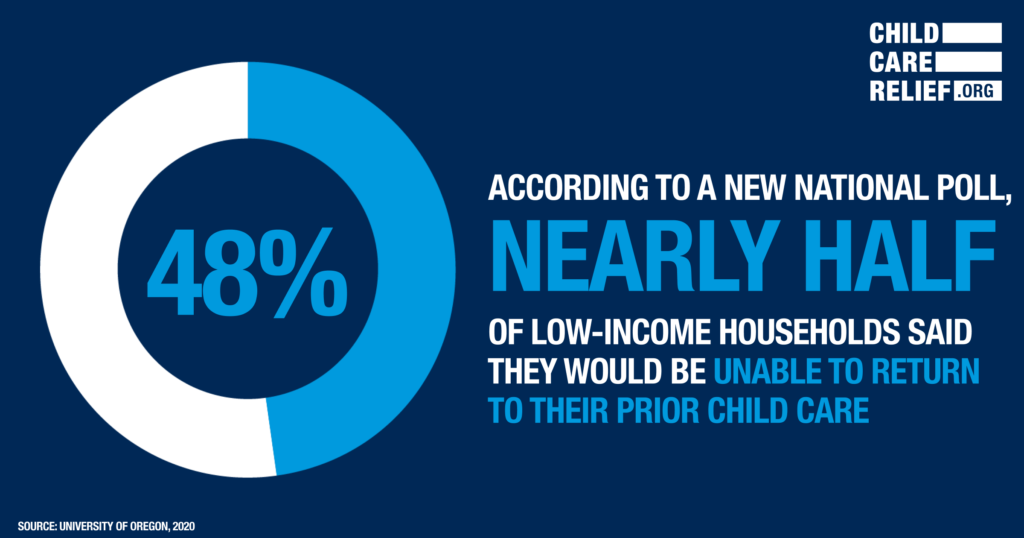
New Poll Shows Child Care Is Inaccessible for Many Working Families
More than four million child care slots at risk as American households prepare to return to work
WASHINGTON—New data released by the University of Oregon’s RAPID-EC Research Group finds that almost half of working families have lost the child care arrangements they were using before the pandemic. This issue is particularly pressing for lower-income families, with 48% of lower-income households reporting that they don’t have the ability to return to their previous child care arrangement.
Overall, the loss of child care supply due to the pandemic could result in a permanent loss of 4.5 million child care slots. This new data makes this clear: without their previous child care options, a significant proportion of working parents may be unable to return to work. As the economy reopens, we won’t be able to return to pre-pandemic business-as-usual if millions of parents are unable to access reliable child care.
Although COVID-19 has created an acute child care crisis in the U.S., the pandemic is not fully to blame. Even before the pandemic, the child care system was under pressure and many families lacked access to quality care, with 3 in 5 rural communities identified as child care deserts.
According to RAPID-EC’s survey, the majority of working families are worried and anxious about returning to child care, and over half of these families said that either they or their partner will provide child care in the next month. Meanwhile, child care providers are in a double bind as they face increased costs to reopen, as well as significantly reduced capacity due to safety measures and concern from parents who may not bring their child back to their provider.
These statistics underscore the challenges that face the child care industry due to its unique business model. Quality child care is an expensive service to provide, but providers often keep tuition rates low enough for families to afford, while covering basic expenses such as payroll and rent. Most providers only break even if they are operating at full or close to full capacity, meaning that reduced enrollment will further damage the industry. The pandemic has only exacerbated the financial struggles of a child care system that was already struggling financially.
The University of Oregon’s RAPID-EC Research Group conducts a weekly survey of households with children ages five and under to gather data on access to child care and early childhood education, financial and work circumstances, and child and adult emotional well-being. The survey launched during the COVID-19 pandemic on April 6, 2020. To learn more about the critical need for child care relief to keep providers in business, including stories directly from people facing these challenges around the country, please visit https://childcarerelief.org and follow https://twitter.com/ChildCareRelief

